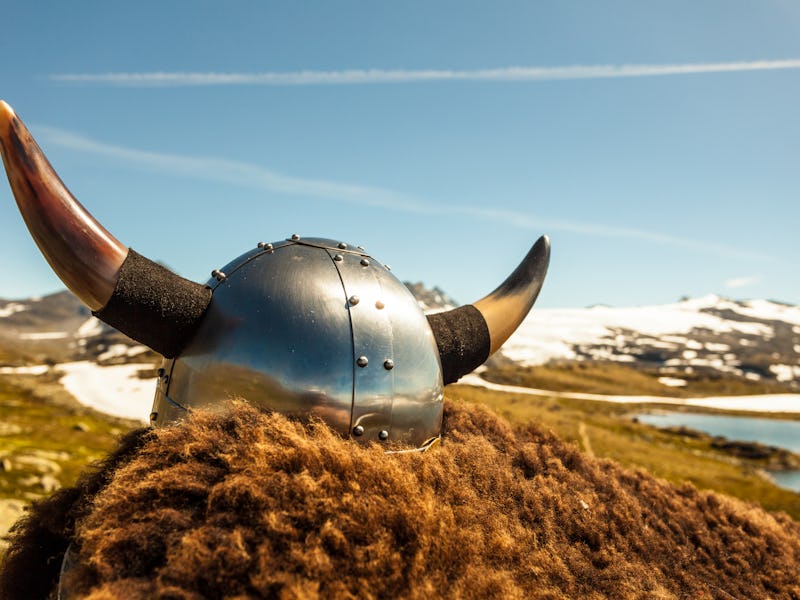Cosmic ray discovery both confirms and complicates Viking legend
The saga continues.

Leif Erikson, son of Viking explorer Erik the Red, was many things — an explorer in his own right, he played a starring role in 10th century Norse geopolitics. But he was also a deeply religious man. And like so many explorers with designs on settling new lands, he wanted to bring his religion, Christianity, along for the ride. Specifically, he wanted to bring Christianity to Greenland — but ended up being the first European to set foot on American soil instead. At least that’s how the story goes... and now the science goes that way, too.
In 992 A.D., the globe was itself in the grips of a solar storm. During the storm, high-energy particles blasted from the Sun with such force they entered the Earth’s atmosphere and collided with atoms, leading to a spike in atmospheric carbon. The moment was so powerful trees recorded it in their rings, leaving a radiocarbon signal for future generations to find.
INVERSE is counting down the 20 science discoveries that made us say “WTF” in 2021. This is #20. See the full list here.
The discovery — The cosmic-ray event narrows down when the Vikings were in North America, specifically at L’Anse aux Meadows, a settlement on the northernmost tip of Newfoundland. Their presence marks the earliest recorded instance of Europeans on the continent and the first known human circumnavigation of the globe. It also helps substantiate the legend of Leif Erikson.
Leif Erikson’s legend lives on in scientific fact.
In a study published earlier this year in the journal Nature, scientists use the signal from this event to date the Viking presence in L’Anse aux Meadows. Researchers analyzed wooden fragments dug up from the earth to measure radiocarbon concentrations leftover from the cosmic ray event, allowing them to “overcome the imprecision of previous age estimates,” they write.
They believe Vikings were in the Americas in the year 1021 A.D. — a date that syncs up with two independent accounts of Erikson’s travels: The Saga of Erik the Red, and The Saga of the Greenlanders, both thought to have been written around the 1200s.
Digging into the details — The study doesn’t establish the exact founding date of L’Anse aux Meadows — other analyses of architectural remains at the settlement have suggested there were people living there closer to 1000 A.D. But the cosmic ray event has the advantage of being a chemical time marker, so there is less room for subjective interpretation.
Using a technique called high-precision accelerator mass spectrometry, they first determined the wood fragments’ age. Then they detected an anomaly in the radiocarbon data at 993 A.D., and then “it simply becomes a matter of counting the number of rings to the waney edge” to “determine the exact felling year of the tree,” the team writes in the paper.
Specifically, thirty years later to 1021 A.D.
That tree was then used to make whatever tool or other implements the fragments belonged to.
The researchers lay out two reasons they are confident Vikings cut and used the wood as opposed to indigenous people living in the area at the time:
- The fragments come from the layers at L’Anse aux Meadows archaeologically attributed to the Vikings already.
- The fragments have clean-cut marks that only could have been made by metal blades. At the time, the region’s indigenous people didn’t manufacture metal, but the Vikings did use metal tools.
Why it matters — Part of the reason why this study is so incredible is that it not only changes the historical record of the Vikings in America (and European colonialists more broadly), but it also provides empirical evidence for the truth of lore passed down orally through generations of Vikings. Eventually written down, they are a testament to the power of oral histories in preserving truth hundreds of years after the events occurred.
Written down centuries after their events occurred, the sagas detailing Leif Erikson’s feats are relatively consistent with these findings.
Co-author Michael Dee, a professor of isotope chronology at the University of Groningen, told Inverse at the time that the result itself will, he hopes, live on in the annals of scientific history.
“Sometimes when I get a quiet second to myself, I am very proud of what we have achieved,” Dee said, “and the thought that this may be a fact that endures for a considerable period of time.”
INVERSE is counting down the 20 science discoveries that made us say “WTF” in 2021. This is #20. Read the original story here.